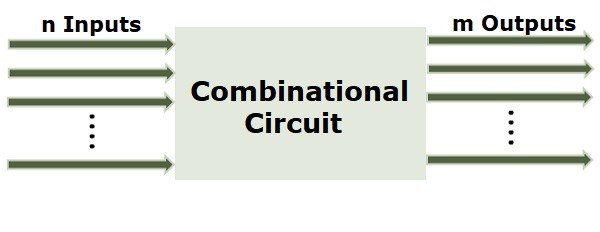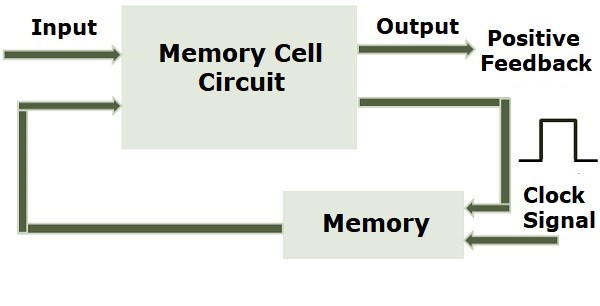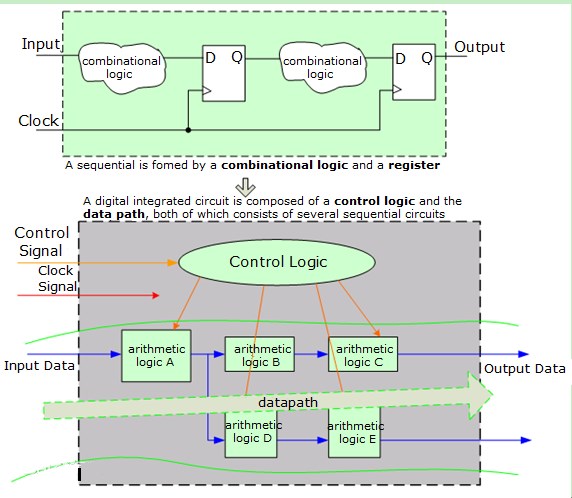In the fast - paced world of modern electronics, digital integrated circuits (ICs) are the unsung heroes that power everything from our smartphones and laptops to complex supercomputers and industrial control systems. But what exactly is a digital integrated circuit?
A digital integrated circuit, also known as a logic integrated circuit, is an electronic circuit that is designed to process and manipulate digital signals. It is based on the principles of digital logic, which uses binary numbers (0s and 1s) to represent information. These circuits are fabricated on a single semiconductor substrate, typically made of silicon, and contain a large number of interconnected electronic components such as transistors, resistors, capacitors, and diodes.
Logical Function of Digital Integrated Circuits
Digital logic circuits can be divided into two categories: combinational logic circuits and sequential logic circuits. In a combinational logic circuit, the output at any moment depends solely on the input at that moment, rather than the previous working state of the circuit. The most commonly used combinational logic circuits include encoders, decoders, data selectors, demultiplexers, numerical comparators, full adders, and parity checkers, among others.

Figure 1. Combinational Logic Circuit
In a sequential logic circuit, the output at any moment depends not only on the input at that moment but also on the original state of the circuit. Therefore, sequential logic circuits must have a memory function and must include storage unit circuits. Registers, shift registers, and counters are the most commonly used sequential logic circuits.

Figure 2. Sequential Logic Circuit
For the different applications of these two types of logic circuits, there are standardized and serialized integrated circuit products, usually referred to as general-purpose integrated circuits. Correspondingly, those integrated circuits designed and manufactured for specific purposes are called Application-Specific Integrated Circuits (ASICs).
Internal Design of Digital Integrated Circuits
A digital circuit is composed of combinational logic and registers (flip-flops). Combinational logic, a function made up of basic gate circuits, has outputs that depend solely on the current inputs. The first diagram in Figure 3 illustrates combinational logic, which only performs logical operations. In contrast, a sequential circuit contains not only basic gate circuits but also storage elements used to retain past information. The steady-state output of a sequential circuit is related to both the current input and the state formed by previous inputs. While carrying out logical operations, the processing results can be temporarily stored for use in the next operation, as shown in the second diagram.
Functionally, the interior of a digital integrated circuit can be divided into two parts: the data path and the control logic. Both parts integrate a large number of sequential logic circuits, most of which are synchronous sequential circuits. A sequential circuit is divided into several nodes by multiple registers, and these registers operate at the same rhythm under the control of a clock, which simplifies the design process.

Figure 3. Internal Structure of Digital Integrated Circuits
Over long-term design practices, many standard general-purpose units have been developed. These include selectors (also known as multiplexers, which can select one output from multiple input data), comparators (used to compare the magnitudes of two numbers), adders, multipliers, shift registers, and so on. These unit circuits have regular shapes and are easy to integrate, which is also why digital circuits have achieved better development in integrated circuits.
These units are connected according to design requirements to form a data path. The data to be processed is transmitted from the input end to the output end through this path, and the final processing result is obtained. At the same time, the specially designed control logic and each component that controls the data path should operate in accordance with their respective functional requirements and specific timing relationships.
Models of Digital Integrated Chips
The model of a digital integrated chip typically consists of three parts: a prefix, a serial number, and a suffix, each carrying specific information:
Prefix: It mostly represents the manufacturer or the series to which the chip belongs. For example, the "74" series is a common prefix for TTL digital chips, produced by multiple manufacturers; the "CD40" series is a typical prefix for CMOS chips, dominated by manufacturers like Texas Instruments (TI).
Serial Number: It is used to distinguish the specific functional model of the chip. For instance, the "00" in 74LS00 indicates that the chip is a quad 2-input NAND gate, while the "595" in 74HC595 represents an 8-bit shift register.
Suffix: It usually marks parameters such as the chip's packaging form and temperature range. For example, "DIP" stands for dual in-line package, "SMD" for surface-mount device package; "-40℃~85℃" indicates the operating temperature range of the chip.
This model naming method provides designers with a convenient identification basis, enabling them to quickly judge the chip's function, applicable scenarios, and physical characteristics.
Types of Digital Integrated Chips
Based on circuit structure, function, and application scenarios, digital integrated chips can be divided into the following main types:
1. Classified by Circuit Structure
TTL (Transistor-Transistor Logic) Chips: They are centered on bipolar transistors and rely on both electrons and holes for conduction. They feature fast switching speeds and strong driving capabilities but have relatively high power consumption. Common 74 series (such as the 74LS138 decoder) belong to TTL chips and were widely used in early digital systems.
CMOS (Complementary Metal-Oxide-Semiconductor) Chips: They consist of a complementary structure of PMOS and NMOS transistors, conducting electricity with only one type of carrier. They have advantages such as low power consumption, high input impedance, and a wide power supply voltage range, making them the mainstream type of digital chips currently. Examples include the CD4000 series and the 74HC series (such as the 74HC04 inverter), which are widely used in portable devices and low-power systems.
2. Classified by Function
Logic Gate Chips: They implement basic logical operations and are the foundation of complex circuits. They include AND gates (such as 74LS08), OR gates (such as 74LS32), NOT gates (such as 74LS04), and composite logic gates (such as the NAND gate 74LS00 and the NOR gate 74LS02).
Sequential Logic Chips: They contain storage units, and their outputs depend on both current inputs and historical states, used to implement functions such as counting and storage. Examples include the 4-bit counter 74LS161, 8-bit register 74LS373, and shift register 74LS164.
Data Processing Chips: They are used for specific operations such as data selection, encoding, and decoding. For example, the 8-to-1 data selector 74LS151, 3-to-8 line decoder 74LS138, and BCD-to-seven-segment display decoder 74LS48.
3. Classified by Application Scenario
General-Purpose Integrated Circuits: Designed for standardized functions, they are suitable for multiple scenarios and have versatility and interchangeability. The aforementioned logic gates, counters, registers, etc., all fall into this category. For example, the 74 series and CD4000 series chips can be flexibly used in various digital systems.
Application-Specific Integrated Circuits (ASICs): Custom-designed for specific scenarios, such as image signal processing chips in smartphones and on-board control chips in automotive electronics. ASICs can optimize performance and reduce power consumption to the maximum extent but have high design costs and long cycles, making them suitable for mass-produced dedicated devices.
Programmable Logic Devices (PLDs): Including FPGAs (Field-Programmable Gate Arrays) and CPLDs (Complex Programmable Logic Devices), they allow users to customize logical functions through programming. For example, Xilinx's Spartan series FPGAs can be used in prototype development or small-batch customization scenarios, balancing flexibility and performance.
These different types of digital integrated chips collectively support the construction of everything from simple logic control to complex digital systems, meeting diverse electronic design needs.
Digital Integrated Circuit Classification Based on Integration Scale
Small - Scale Integration (SSI): SSI circuits typically contain up to 10 gates or a few dozen components. These circuits are often used for basic logic functions in simple digital systems. For example, a 7400 chip, which contains four two - input NAND gates, is a common SSI device. It can be used in applications like simple logic control circuits, where basic logical operations are required.
Medium - Scale Integration (MSI): MSI circuits have between 10 and 100 gates or a few hundred components. They are used for more complex functions. A 74161 chip, which is a 4 - bit synchronous counter, is an example of an MSI device. Counters are widely used in digital systems for tasks such as counting events, generating timing signals, and controlling the sequence of operations.
Large - Scale Integration (LSI): LSI circuits contain 100 to 10,000 gates or thousands of components. Memory chips like the early static random - access memories (SRAMs) and simple microprocessors are examples of LSI devices. An 8 - bit microprocessor might be implemented using LSI technology. It can execute a set of instructions, perform arithmetic and logical operations, and control the flow of data within a digital system.
Very - Large - Scale Integration (VLSI): VLSI circuits have over 10,000 gates or hundreds of thousands to millions of components. Modern microprocessors, such as those found in personal computers, and large - capacity dynamic random - access memories (DRAMs) are classic examples of VLSI devices. A high - end desktop CPU may contain billions of transistors, which are organized into complex logic circuits to perform extremely fast and sophisticated computational tasks.
Ultra - Large - Scale Integration (ULSI) and Giga - Scale Integration (GSI): ULSI refers to circuits with an even higher level of integration, often in the tens of millions of components. GSI, which is an even more advanced stage, involves integrating over a billion components on a single chip. State - of - the - art mobile phone processors and some high - performance graphics processing units (GPUs) fall into this category. These chips are capable of handling massive amounts of data and performing complex operations at high speeds, enabling features like high - definition video processing, real - time 3D graphics rendering, and advanced artificial intelligence algorithms.
Digital Integrated Circuits | Number of Gate circuits | number of components |
SSI Circuits | 10 | ≤100 |
MSI Circuits | 10-100 | 100-1000 |
LSI Circuits | >100 | 1,000-10,000 |
VLSI Circuits | >10,000 | 100,000-1,000,000 |
ULSI Circuits | >100,000 | 1,000,000-10,000,000 |
How Digital Integrated Circuits Work?
Digital integrated circuits operate based on the binary system. Transistors within the circuit act as switches. When a transistor is turned on, it represents a logic 1 (usually a high voltage level), and when it is turned off, it represents a logic 0 (usually a low voltage level). The flow of electrical current through these transistors is controlled by the input signals applied to the circuit.
In more complex digital integrated circuits, such as microprocessors, a large number of these basic logic elements are combined and organized in a hierarchical manner. The microprocessor fetches instructions from memory, decodes them to understand what operation needs to be performed, and then executes those instructions using arithmetic and logic units (ALUs) and other functional blocks within the chip. The data is stored and manipulated in registers, which are essentially small, fast - access memory elements within the microprocessor.
Use and Application of Digital Integrated Circuits
Microprocessors: Microprocessors are the brains of a computer system. They execute a set of instructions stored in memory to perform tasks such as arithmetic operations, data manipulation, and control of other components in the system. For example, the Intel Core series processors used in desktop and laptop computers can perform billions of instructions per second. They are designed to be highly versatile and can be programmed to handle a wide range of applications, from word processing and web browsing to complex scientific simulations and gaming.
Memory ICs: Memory integrated circuits are used for storing data and programs. There are two main types: read - only memory (ROM) and random - access memory (RAM). ROM stores data permanently and is used to hold the basic input/output system (BIOS) in a computer, which contains the startup instructions. RAM, on the other hand, is volatile memory that is used for temporarily storing data that the computer is currently working on. Dynamic random - access memory (DRAM) is commonly used in computers due to its high storage capacity and relatively low cost, while static random - access memory (SRAM) is faster but more expensive and is often used in cache memories to speed up data access.
Logic ICs: Logic ICs are used to perform various logical operations. They can be simple logic gates, as mentioned earlier, or more complex combinational and sequential logic circuits. Combinational logic circuits, like multiplexers (which select one of several input signals to be routed to the output) and decoders (which convert a binary code into a set of output signals), have outputs that depend only on the current input values. Sequential logic circuits, such as flip - flops and counters, have outputs that depend not only on the current inputs but also on the previous state of the circuit. These circuits are crucial for tasks like data storage, retrieval, and processing in digital systems.
Application - Specific Integrated Circuits (ASICs): ASICs are custom - designed integrated circuits for a specific application. For example, in a digital camera, there may be an ASIC designed specifically for image processing. This chip is optimized to perform tasks such as image sensor control, color correction, and compression. ASICs offer advantages such as smaller size, lower power consumption, and higher performance for the specific application they are designed for, compared to using general - purpose ICs.
Field - Programmable Gate Arrays (FPGAs): FPGAs are programmable logic devices that allow users to configure the logic functions of the chip after it is manufactured. They contain a large number of programmable logic blocks and interconnects. FPGAs are used in applications where flexibility is required, such as prototyping new digital designs. For instance, in the development of a new communication protocol, an FPGA can be programmed to implement the protocol's logic and be easily reconfigured as the design evolves. They are also used in some high - performance computing applications where the ability to customize the hardware in real - time can provide a significant speed - up for specific algorithms.
The Significance of Digital Integrated Circuits
Digital integrated circuits have revolutionized the field of electronics. Their small size, low power consumption, high reliability, and ability to perform complex operations at high speeds have made them indispensable in modern technology. They have enabled the miniaturization of electronic devices, from the tiny wearable fitness trackers on our wrists to the powerful servers that run the internet. The development of digital integrated circuits has also been a key driver in the advancement of industries such as telecommunications, healthcare (e.g., in medical imaging devices and patient monitoring systems), automotive (for functions like engine control and driver - assistance systems), and aerospace (for avionics and satellite communication). In short, digital integrated circuits are the cornerstone of the digital age, enabling the technology - driven lifestyle that we have come to rely on.
Hot-selling products of SIC
71421LA55J8 UPD44165184BF5-E40-EQ3-A SST39VF800A-70-4C-B3KE IS66WV1M16DBLL-55BLI-TR AS4C32M16SB-7BIN W25Q16FWSNIG
AS7C34098A-20JIN 752369-581-C W957D6HBCX7I TR IS61LPS12836EC-200B3LI MX25L12875FMI-10G QG82915PL
Product information is from SIC Electronics Limited. If you are interested in the product or need product parameters, you can contact us online at any time or send us an email: sales@sic-chip.com.









 Wishlist (0 Items)
Wishlist (0 Items) 